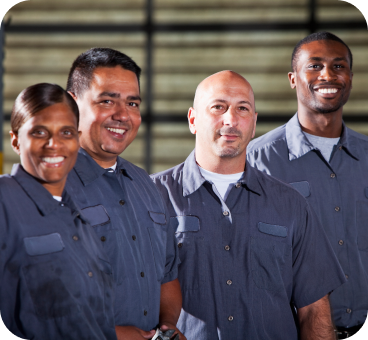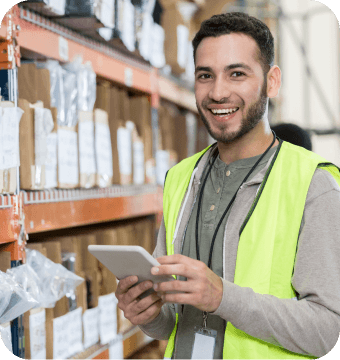
5 Ways AI Is Going to Impact the Restoration Industry in 2024



In 2024, AI is an impossible concept to avoid—even in the restoration industry.
The proof is in the data. The restoration industry statistics presented in KnowHow’s State of the Industry Report identified AI as a top emerging trend and showed that most restorers (75%) believe AI will impact the restoration industry in a big way.

Still, it can be hard to move beyond thinking about AI as a ‘concept,’ buzzword, or yet another piece of technology to puzzle over. In reality, it’s a tool you can actually use and see results from in your restoration business.
AI is already impacting the restoration industry, and understanding the specific, practical ways you can use it in your day-to-day operations will give you a competitive advantage.
Restoration Management Systems and the Software Struggle
If restorers don’t know where to start with AI, it’s likely because they’re busy managing other industry-wide challenges associated with technology.
Our data shows that the biggest struggles restoration companies face when it comes to technology and software are adoption and the sheer volume of tech tools required to get the job done.

Having vs. Using Technology
Buying the latest and greatest restoration contractor software doesn’t automatically translate to success. The real challenge, as most restoration companies know, lies in effectively integrating these technologies into daily operations and getting their techs to actually use them.
The gap between having and using technology in the restoration industry often stems from a lack of proper on-the-job training and support. In our analysis, rarely is this lack of technician training and onboarding the product of mismanagement. Rather, it comes down to management capacity—companies simply lack enough competent trainers with time to train.
As the process of doing the job becomes increasingly fragmented between tech tools, busy technicians skip steps if they think this complex dance is too complicated or inconvenient. They’re already busy trying to figure out how to get the job done—another symptom of strained training capacity.
Software Overload
Speaking of busy, if you’re having trouble getting your workforce to use one restoration contractor software or restoration management system, good luck trying to implement multiple tools!
In 2024, it feels like every problem has a new software solution attached—and the restoration industry is no different. Software overload can lead to confusion, decision paralysis, or indifference for your technicians on-site. Plus, it can be a big, expensive strain on your resources. Companies can feel like their software setup is creating a 'hundred papercuts' to their operational costs.
This is exactly where KnowHow comes in. We don’t just supply industry-leading, AI-integrated software. We focus on helping restoration businesses adopt processes and properly train their workforce.
KnowHow untangles this complex, fragmented process and puts everything into a simple roadmap for a worker to follow on their mobile device. It's a clear path for how everything fits together.
Using the right tool at the right time in the correct way drives enormous productivity, eliminates countless errors, and ensures staff don’t quit from the mental fatigue of memorizing their every move. By focusing on both the technology and the people who use it, KnowHow helps restoration businesses overcome these common hurdles.
5 Ways AI Will Transform the Restoration Industry
It’s important that you not only understand AI—but that you know exactly how to benefit from it as a useful tool.
Supported by data and restoration industry statistics from our research, and informed by our work serving restoration businesses every day, here are five tangible ways AI will change day-to-day work in the restoration industry.
More Dynamic Worker Training
Proper training matters—from project managers to water technicians to estimators. Turnover is a big challenge in the industry. Employers must invest in methods to accelerate competence from day one—for every hire they make, in each role within their company. When it takes longer for your workers to become competent, it increases the chances of employee turnover, and puts your business reputation at risk.
One rookie mistake can make the difference between a loyal commercial customer and a lost business account. A commercial client that has to delay reopening because something was done out of order is generally unsympathetic to a contractor’s staffing woes and uneven approach to onboarding and training.
Outdated manuals, dusty binders left in vans, and one-size-fits-all training models that don't accommodate the needs of today's multilingual labor workforce are no longer cutting it. AI can help the restoration industry move towards personalized training paths that are adaptable to individual workers' competencies—and areas they need improvement in. Forward-thinking restoration companies ensure their training and onboarding are truly outcome-based and align with each worker's unique learning needs—and artificial intelligence is only helping speed up this transition.
- KnowHow’s Skill Builder transforms processes into unique AI-generated quizzes for each team member, making it quicker and easier to build and confirm staff competence without spending hours manually creating tests. The age-old question of ‘how do I know if they know’ can be laid to rest.
Revolutionizing Project Planning
One of AI’s strengths is analyzing data and using it to, among other things, predict likely future outcomes. With this power, project managers can use past performance data to overhaul their project planning process.
In the next few years, we will see more and more restoration management systems that are powered by AI and can crunch the numbers on historical data, weather patterns, and more to provide insights that help predict project timelines and resources needed more accurately.
- KnowHow not only simplifies project management by allowing project managers an easy way to assign and track tasks while overseeing each worker’s progress—but also enhances risk mitigation, compliance, and meeting insurance requirements through exportable reports.
AI Assistants in Every Worker’s Pocket
Imagine instant access to your company’s specific how-tos, processes, and documents, right in your pocket. It’s not some far-off possibility for the restoration industry—it’s already a reality. In many restoration companies, AI is already acting as a foreman, available anytime to answer questions on the job site or in the office, greatly freeing up time and resources.
Using AI out in the field goes beyond just learning by giving restoration workers step-by-step guidance to get real work done. Unlike some Learning Management Systems (LMS) that lean towards theoretical knowledge, leveraging AI-driven technology can shift towards active, hands-on problem-solving. This means your workers will have the tools to execute tasks effectively in real-world scenarios.
- Howie is KnowHow’s on-the-go AI mentor. No more searching through manuals, piles of papers, or waiting for replies. Just type in your question, and Howie will give you a straightforward response right on your phone, based on your company’s Standard Operating Procedures.
Identify Contents with a Simple Photo
The magic of AI’s ability to identify everyday objects through photos extends to the restoration industry. New technological advancements will continue to emphasize the importance of proper documentation and data collection on-site by making it easier to accomplish. In 2024, tools capable of recognizing contents in a loss scenario will become more widespread and accurate, streamlining inventory and assessment processes.
- KnowHow’s ShowHow (try saying that three times fast!) feature further bridges the physical/digital divide by providing team members with instant answers and step-by-step processes by simply tapping or pointing their smartphone at an object, like a piece of equipment.
The reality is, new staff struggle to memorize the name and usage of every piece of equipment in the warehouse or on the job site. Today, a worker needs only to spot the company’s logo on a piece of equipment to know they are only a tap or scan away from being connected to step-by-step guidance on how to use, place, or troubleshoot anything.
Strengthen Estimates with AI
AI has a growing role in refining estimates for the restoration industry. While this isn’t new—companies like AiME (now DocuSketch) or CoreLogic's QA Assist have been providing AI-enhanced suggestions on estimates for years—it’s definitely gaining more widespread use. Equipped with data from thousands of past estimates, AI-enhanced tools can suggest optimizations, improving accuracy and reliability.
Powered by data, these tools are getting better at considering factors like changing costs for materials, different pay rates, and even local pricing differences. The shift to more predictive and adaptive project planning will help you give more competitive bids and plan their budgets smarter.
AI and the Future of the Restoration Industry
No technological advancements happen in a vacuum, in any industry. The shift in restoration, documented in the State of the Industry Report, underscores the importance of adapting company cultures to embrace emerging innovations like AI-enhanced solutions.
The caveat? Using AI effectively not only requires improving data collection practices but also adopting new habits for data rigor and accuracy—it will mean the difference between those who lead and those who lag behind.
If you want to learn more about the KnowHow features highlighted in this article and how we can help you actually use AI in a tangible, applicable way on a daily basis to empower your workforce and solve more problems, book a demo with us today.









